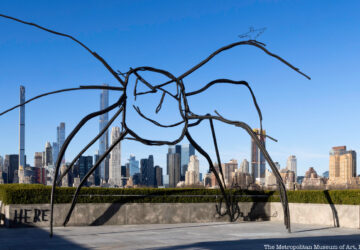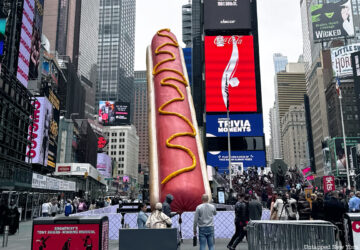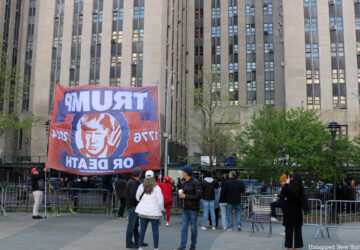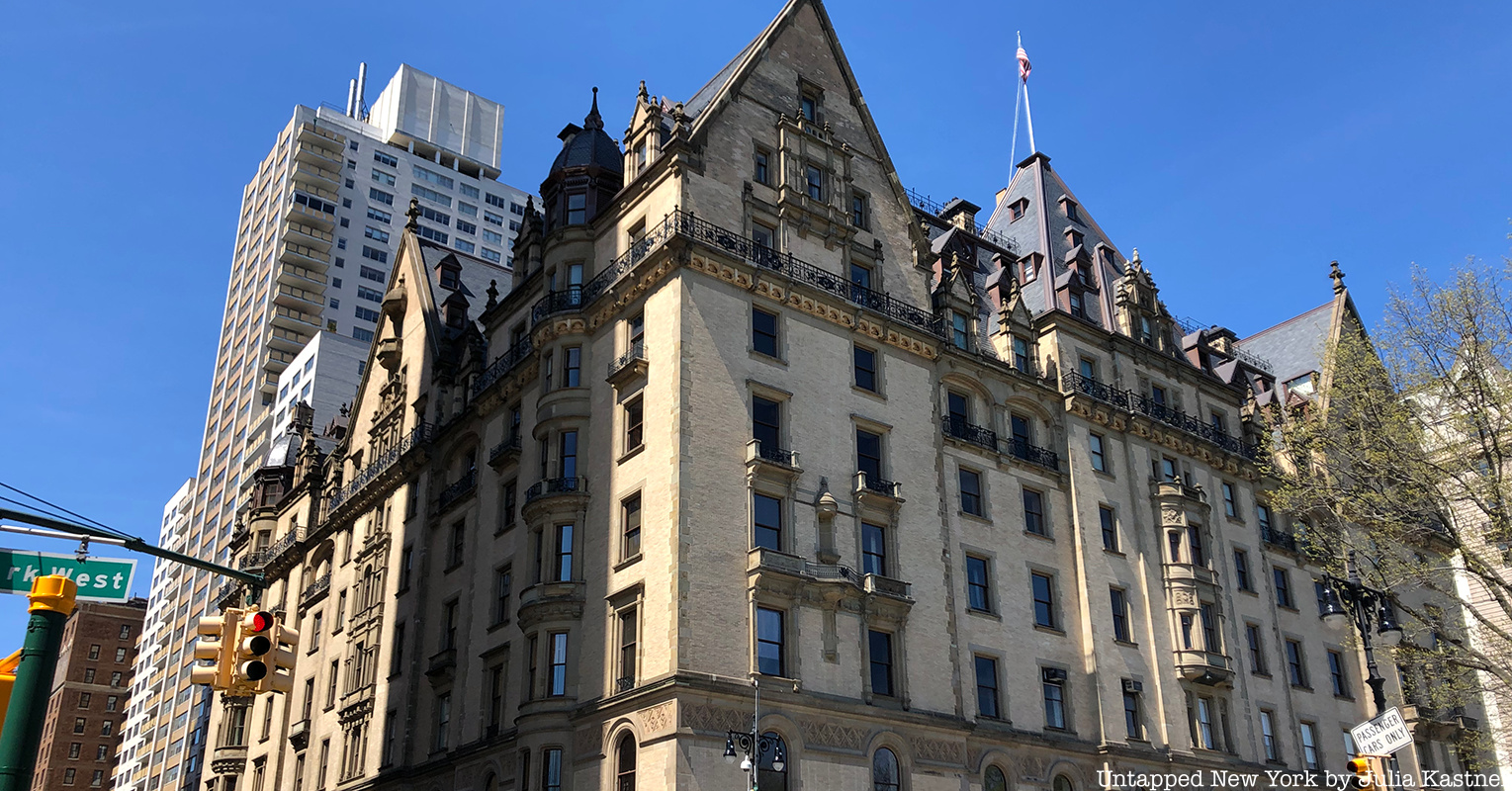Untapped New York is excited to announce a new editorial collaboration with the Gotham Center for New York City History. In this series, we’ll share fascinating stories from the Gotham Center archives. These scholarly articles will explore New York City history through a variety of lenses and cover topics that range from Dutch colonialism to the Dakota Apartments!
In the late summer of 1883, the Dakota Apartments was nearly ready for tenants. After three years of construction, the luxury apartment building had only a few months’ work left to go. Slate-tile roofers, sheet-metal workers, and ironworkers were completing the roof, while carpenters, plasterers, and plumbers finished the interiors. Every day, hundreds of craftsmen trekked uptown to work on the million-dollar building that was not only unusually expensive but also remote in location. Conceived by the businessman Edward C. Clark shortly before his death as the crown jewel of his extensive property investments, the Dakota helped to establish the Upper West Side as an affluent residential district. At the time, however, it was surrounded by a few rowhouses, a corner saloon, and some shanties that were slated for destruction.[1]
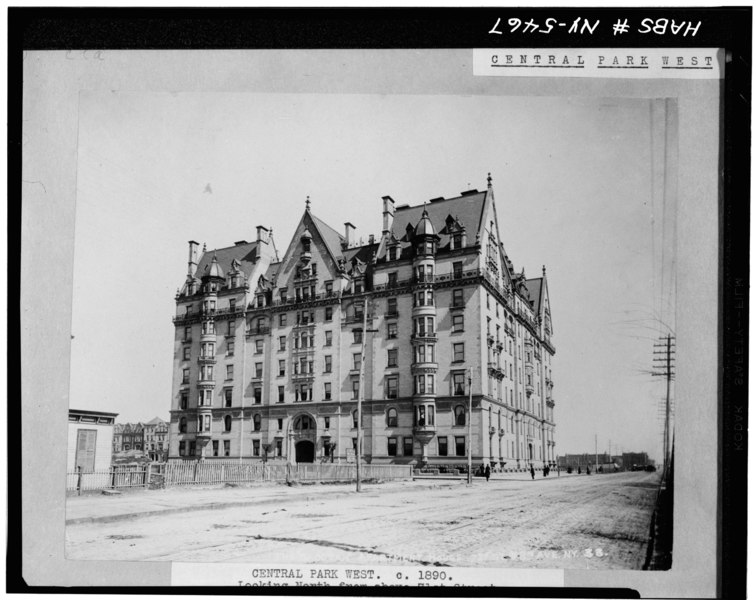
The strike began on the morning of Friday, August 17th, when a group of walking delegates entered the site to enforce an order issued by the Building Trades Council that decreed that all buildings in the city would be erected with union labor. While most of the four hundred workers were union members, fifty plasterers were not. When the general contractor John Banta refused to force Michael Powers, the plastering contractor, to compel them to join the union or discharge them, the delegates pulled every trade off the job. By noon, three plasterers came out, paid a $25 dollar fine, and joined the union. By the end of the day more than twenty plasterers joined them, leaving a dozen behind. On their way out, some plasterers scrawled on the walls with pencils — ruining much of the plastering done so far. When news of the strike reached the papers, reporters believed it would be settled the following day.[2]
Yet when the delegates returned on Saturday, they found that James Meehan, the executor of the Clark estate, the architect Henry J. Hardenbergh, and the general contractor would not force Powers to submit. In response, the delegates called a second strike at twenty-eight rowhouses that the Clark estate was erecting behind the Dakota on W 73rd Street. By calling a strike against these rowhouses the unions ramped up the pressure on the owner, the architect, and the general contractor to resolve the situation — Powers wasn’t even involved in these buildings. As the strike entered its second day a “platoon of police” was stationed on the block to prevent delegates from calling on the plasters who wouldn’t leave. Sensing the strike would not be resolved quickly after all, delegates told workers to find another job in the city.[3]
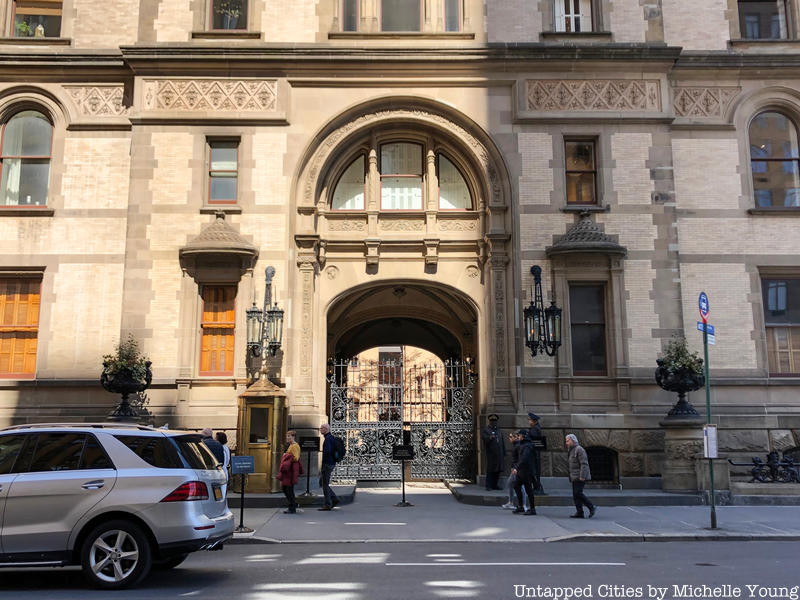
The following week, Meehan, Hardenburgh, and Banta had intense conversations with Powers and reported that the contractor would sue if they attempted to interfere with his work or fire him. Seeking to force the issue, the delegates responded by increasing the pressure once more and called strikes at two other projects the Clark estate was building at the time, the Ontiora, an apartment building at Seventh Avenue and 55th Street, and some flats in Harlem. This was the final card the walking delegates had to play — targeting the building owner explicitly. Neither Hardenbergh, Banta, or Powers had anything to do with these buildings. Reporters following the strike were incredulous that the building trades would hold up thirty projects for the sake of a single contractor and a dozen workers, but as one walking delegate explained, they vowed to carry on this fight “to the bitter end.”[4]
The following week, Meehan, Hardenburgh, and Banta had intense conversations with Powers and reported that the contractor would sue if they attempted to interfere with his work or fire him. Seeking to force the issue, the delegates responded by increasing the pressure once more and called strikes at two other projects the Clark estate was building at the time, the Ontiora, an apartment building at Seventh Avenue and 55th Street, and some flats in Harlem. This was the final card the walking delegates had to play — targeting the building owner explicitly. Neither Hardenbergh, Banta, or Powers had anything to do with these buildings. Reporters following the strike were incredulous that the building trades would hold up thirty projects for the sake of a single contractor and a dozen workers, but as one walking delegate explained, they vowed to carry on this fight “to the bitter end.”[4]
Yet the strike also shows how organizing the building trades presented challenges that were unique to the industry. Construction workers labored in an industry that lacked a single large employer, forcing unions to fight building owners, architects, general contractors, and dozens of contractors all at once due to the prevalence of subcontracting. Building projects were also temporary, the building season was nine months long, and many workers were unemployed throughout the winter. What made their task especially difficult was that construction wasn’t confined to a particular neighborhood, but took place all over the city. Given these conditions, the walking delegates and their combination in the Building Trades Council became essential to the rejuvenation of the building trades unions in the late 19th century.
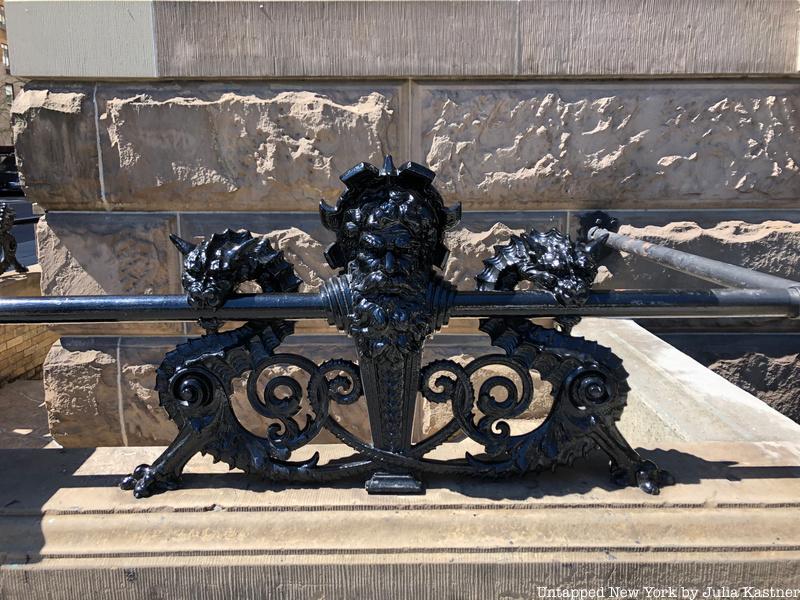
Launched in July of 1883 with the help of the Central Labor Union, the Building Trades Council brought together the elected walking delegates of every union willing to bind itself to mutual support. At the time of the Dakota strike, it included delegates representing the bricklayers, stonecutters, derrickmen, carpenters, framers, plasterers, painters, plumbers, and laborers. From the beginning, the BTC preserved its independence and refused affiliation with any labor organization — it included unions affiliated with the Federation of Organized Trades and Labor Unions, the Knights of Labor, the Central Labor Union, as well as unions with no affiliation at all. Meeting each week, delegates planned strikes, settled jurisdictional disputes, and coordinated their activities in a rapidly growing city. Although many sympathetic strikes were settled quickly, the BTC became essential when employers fought back and unions had to work together to defeat the best efforts of employers to undermine them.[6]
In late August, Meehan attempted to diffuse the strike at the Dakota by giving the architect, builder, and subcontractors a grace year to finish their work on the project. Although he forfeited a year’s rentals in the process, valued at $200,000, he believed it would deflate the pressure they felt to capitulate to the unions in order to meet their contractually agreed deadline. While the walking delegates called off the strike on the other Clark properties, they kept up their strike against Powers at the Dakota and dug in for the long haul. As fall turned to winter, winter to spring, and spring to summer, work on the building remained idle. According to the building trades, Powers began to waver once his bids for other jobs were rejected out of hand by builders who didn’t want to deal with the stubborn contractor and invite his problems to their worksites.[7]
Finally, in August of 1884, a year after the strike started, Powers worked out a compromise with the plasterers’ union, promising to employ union men in the future. In response, the fines on the workers were remitted, the holdouts joined the union, construction resumed, and the Dakota Apartments was completed later that fall. While workers didn’t achieve an immediate victory with their strike, it was a success insofar as it served as a warning to other building owners, builders, and contractors. If workers could stop work on the luxury apartment building for a year, one financed by the fortune of the co-founder of the Singer Sewing Machine Company, clearly unions could ruin smaller jobs if they wanted to. Through strikes, the threat of strikes, and the fear of strikes, the building trades consolidated their power in the industry.[8]
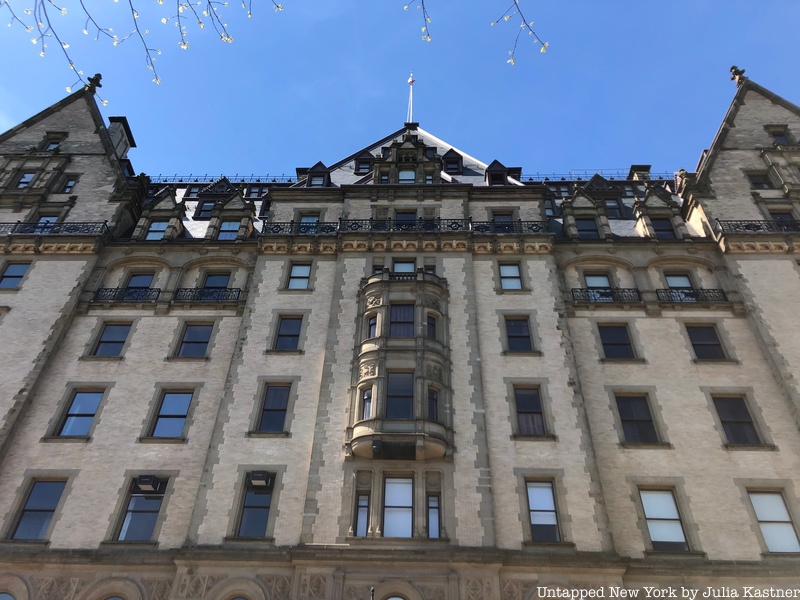
The strike at the Dakota was one of seven sympathetic strikes coordinated by the building trades council in the summer of 1883. A strike against the Metropolitan Opera House was called because the architect J. Cleaveland Cady wouldn’t let walking delegates enter the site. At the Produce Exchange, workers walked off the job over non-union plumbers and laborers, who ultimately joined their unions. Another strike was called at a block of rowhouses south of Central Park because the contractors engaged in “lumping,” in which they sweated gangs of journeymen carpenters for a fixed price to do repetitive tasks like hanging doors. Significantly, all of the strikes called by the BTC were focused on enforcing union rules, principally the rule that prohibited union workers from laboring alongside non-union men. In 1883, the building trades were focused on one goal only: to organize as many workers as possible before they embarked on a coordinated effort to raise wages and lower hours across the industry.[9]
After languishing for a decade after the Panic of 1873, in the early 1880s the New York building trades were in the midst of a rapid revival. Starting out in the summer of 1883 with four unions representing less than 10,000 workers, by the fall the Building Trades Council included more than a dozen unions that had organized five-sixths of the workers in their trades, roughly 50,000 workers in total.[10] Such a show of strength could not fail to impress the world of organized labor. According to John Swinton’s Paper, construction workers were destined to play an important role not only in the affairs of the building industry but in the larger fight against concentrated power and wealth. In his review of New York’s major labor societies and radical political parties, Swinton ranked the BTC alongside the Knights of Labor and the Central Labor Union as one of the “forces in the field” giving shape to city’s labor movement.[11]
Alexander Wood is the Helen and Robert Appel Fellow in History and Technology at the New-York Historical Society where he is completing a book about the building of New York between the 1880s and the 1930s.
Sources
[1] “A Special Meeting of the West Side Association, November 22, 1879,” Minute Book of the West Side Association of the City of New York, 1879-1885,” New-York Historical Society; Elizabeth Blackmar and Roy Rosenzweig, The Park and the People (New York: Cornell University Press, 1992), 291-294.
[2] “More Arbitrary Strikes,” New York Times (August 18, 1883), 8; Coercing Non-Union Men,” New York Tribune, (August 19, 1883), 7; “The Builder’s Strike,” New York Herald (August 18, 1883), 6.
[3] “The Dakota Flat Strike,” Truth (August 26, 1883), 6.
[4] “The Striking Builders,” New York Herald (August 21, 1883), 6; “The Building Trades Union,” Truth (August 21, 1883), 1; “Fighting the Non-Union Men,” New York Times (August 25, 1883), 8.
[5] Ronald Mendel, “Craft Labour and the Development of Trade Unionism among Building Tradesmen in Late Nineteenth Century New York,” Construction History 14 (1998), 3-19.
[6] “Three Great Strikes,” John Swinton’s Paper (November 4, 1883), 1.
[7] Ibid.
[8]Report of the Committee of the Senate Upon Relations Between Labor and Capital, vol. 1 (Washington, D.C.: U.s Government Printing Office, 1885), 817; “A Year of Many Strikes,” New York Tribune (February 4, 1884), 3. “The Fight of the Bricklayers,” New York Tribune (August 7, 1884), 1.
[9] “Three Great Strikes,” John Swinton’s Paper (November 4, 1883), 1.
[10] “News of Trade Unions,” John Swinton’s Paper (October 14, 1883), 1.
[11]“The Forces in the Field,” John Swinton’s Paper (October 14, 1883), 1.
